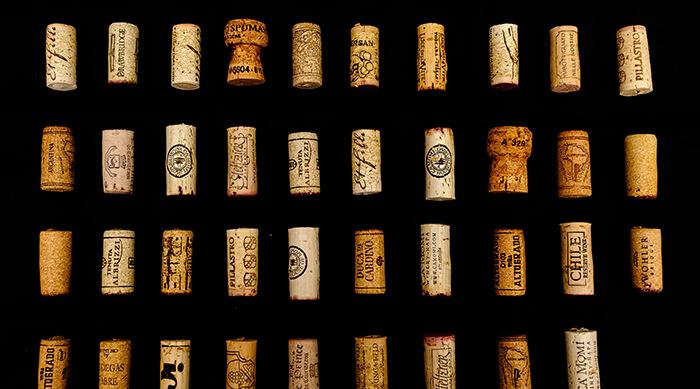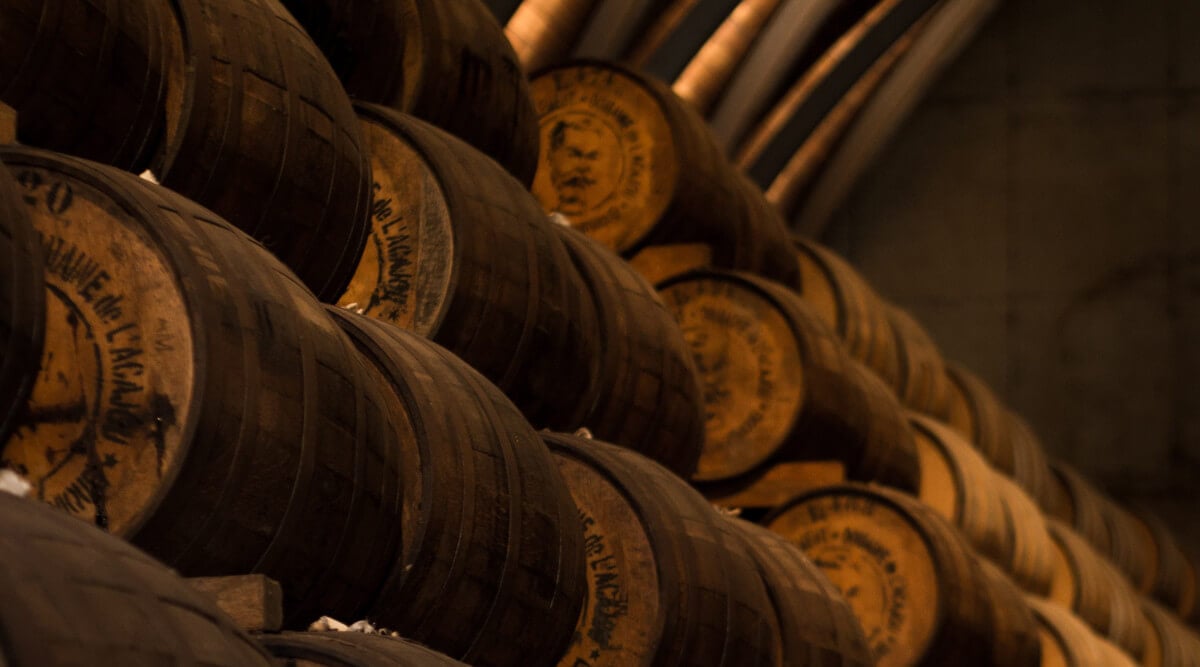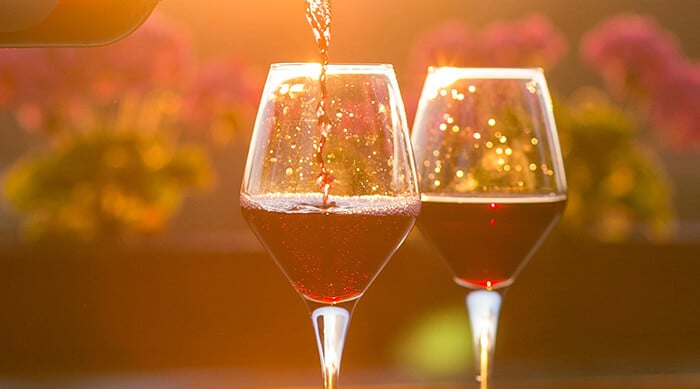The number of options out there when it comes to choosing the best wine can feel overwhelming. If your knowledge is limited or you’re just not sure what you prefer, we’ve put together a guide to give you a broad background on all things wine.
What are the main types of wines? The main types of wine are red, white, rosé, sparkling, dessert, and fortified wines.
There’s quite a variety within those wine types, but some standard rules apply.
Red Wine Basics
All wine is basically fermented grape juice. Red wine is fermented with the red grape skins intact. This process gives the wine its hue and a higher dose of resveratrol, an antioxidant in red grape skins. That’s why many red wine enthusiasts call it the healthier choice.
Red wines are also higher in tannins than white wines but vary in body.
Red Wines to Know
Red wines consistently rank in the top 10 most popular types of wine sold worldwide.
Many red wines are known by their region. Burgundy reds come from the Burgundy region in France. Beaujolais wine is also grown within that region. Italian Chianti wines from central Tuscany are typically made out of Sangiovese grapes.
Here are a few of the more popular wine varietals when it comes to reds:
- Cabernet franc: This light-bodied red is a parent grape of cabernet sauvignon and merlot.
- Pinot noir: This versatile wine is big on fruit flavors like black cherry and lower in carbs.
- Malbec: This fruit-forward wine from Argentina is popular in Bordeaux blends.
- Merlot: Medium-bodied merlot boasts red fruit flavors like cherry and raspberry.
- Syrah/Shiraz: Syrah comes from France; shiraz is Australian. Both are full-bodied.
Food Pairings
The bolder the red wine, the meatier your food pairings. Steaks and stews work well with malbecs and full-bodied cabernets. If you’re serving pasta or seafood, don’t fret. Light-bodied pinot noir is versatile enough for any menu.
You can serve red wine with seafood. Some say it even tones down the fishiness of tuna and salmon.
Serving Tips
Red wine is best just below room temperature. The ideal range is 53-69°F, with light-bodied reds at the lower end of that spectrum. Serve red wine in glasses with wider openings if you want to show off at a wine tasting, but otherwise, a universal wine glass is just fine.
Decanting with a wine aerator is a smart step with red wines, especially if the initial aromas are a little funky. You’ll remove any sediment that’s settled and improve any issues with its flavor profile if you let the wine breathe.
Read Next: 12 Non-Alcoholic Wine Substitutes for Cooking With Wine
White Wine Basics
White wines can be made with both red and white grapes. (Some Champagnes, for example, are made with pinot noir grapes.) The difference here is that the grape skins are removed before fermentation. The result is a lighter flavor profile, low tannins, and higher acidity.
White Wines to Know
From New Zealand to northern Spain, white wine regions typically have cooler climates. Here are a few of the most popular white wine varietals:
- Chardonnay: This full-bodied wine can veer buttery depending on the barrel.
- Chenin blanc: The French version is dry. Winemakers in South Africa like pear notes.
- Pinot grigio/gris: It’s pinot grigio in Italy. In France, it’s pinot gris. Both are light-bodied.
- Sauvignon blanc: Light and acidic; notes depend on ripeness. Grapefruit is common.
- Viognier: This full-bodied wine is low-acid and creamy. Dry versions are herbaceous.
Food Pairings
Seafood and chicken are common proteins paired with white wines. Salads, light snacks, and mild cheeses work well with light white wines. Full-bodied chardonnay can be treated more like red wine. Roasted chicken and creamy pasta both pair well with chardonnay.
Serving Tips
Most white wine is best served chilled to 44-50°F, with lighter, higher-acidity wines on the lower end of that range.
If you’re a fan of stemware, white wine is typically served in glasses with a narrower opening and smaller bowl than red wine. Honestly, you can drink your white wine in whatever is available, but it may not keep cool as long in a larger glass.
Rosé Wine Basics
Rosé wine is made like red wine. The grape skins are just removed much sooner, resulting in that pink hue. A benefit of rosé is its higher resveratrol content over white wines, thanks to that interaction with the grape skins.
Flavor profiles vary by grape, but rosé is generally lower in tannins than most reds.
Rosé Wines to Know
These pink wines can be made from any red grape, just like red wine. Here are a few popular varietals:
- Cabernet sauvignon rosé: This spicy, ruby red rosé is popular in Australia.
- Grenache rosé: This zesty wine is high acidity with flavors of orange and other citrus.
- Syrah rosé: Syrah rosé is on the bolder side of pink wines. It’s savory and deeper in color.
- Zinfandel rosé: California zinfandel rosés balance fruity sweetness and acidity.
Food Pairings
Rosé is a versatile wine that goes with whatever you’re preparing depending on the wine grapes. Planning seafood? Go for lighter styles. If your dish is pasta-heavy, go bolder. Rosé wines pair particularly well with spicy foods.
Serving Tips
Chill rosé to the higher end of the ideal range for white wine. Both red and white wine glasses are fine, but a narrower glass will keep your wine chilled longer.
Orange Wine Basics
Orange wine is growing in popularity as a unique wine style ready to compete with the more popular types of wine.
Some consider orange wines a more organic, functional wine, but the process is similar to that of a rosé. Orange wines get their color from the grape skins, in this case, white grapes.
The flavor can vary depending on how long those grape skins are allowed to ferment. Many resemble a dry white wine, while some taste sour.
Those complex flavor profiles can make it a challenge to pair orange wine with foods. It’s best to have a taste of your orange wine before planning a food menu. Lighter-bodied varietals are great with traditional white wine fare. Bolder orange wines work well with meatier dishes.
Most orange wines are treated like white wine when it comes to chilling and stemware, but again, you’ll want to taste test to find that sweet spot.
Sparkling Wine Basics
Sparkling wines get their bubbles from a second round of fermentation and trapped carbon dioxide gas. They’re typically lower in alcohol content than most wines. If you’re watching your ABV, though, non-alcoholic champagne is always an option!
Sparkling Wines to Know
Sparkling wines can be brut — that’s French for “dry” — or sweet. Here are the most popular varietals:
- Cava: This Spanish sparkling wine resembles a classic French Champagne in taste.
- Champagne: You can’t call it Champagne unless it comes from Champagne, France.
- Lambrusco: This Italian red sparkling wine can come sweet or dry.
- Prosecco: Italian prosecco is fruit-forward and sweeter than most Champagne.
Food Pairings
Sparkling wines are the toasting wines of choice. If you’re pairing them with food, seafood, salads, and charcuterie plates are all delicious with a glass of bubbly.
Serving Tips
Chill sparkling wine to 40-45°F, with vintage Champagnes at the higher end of that range. This is one wine type best served in a particular kind of glass. Tall Champagne flutes help preserve a sparkling wine’s effervescence as the bubbles rise to the top.
Dessert Wine Basics
Simply put, dessert wines are sweet wines often served with dessert.
What is the difference between a dry wine and a sweet wine? The difference between a dry wine and a sweet wine comes down to residual sugars. Dry wines have little residual sugar, while sweet wines have a higher amount.
Dessert Wines to Know
Many dessert wines have a higher alcohol content than red and white wines. Here are a few popular varietals, not to be confused with fortified wines:
- Gewürztraminer: This medium-bodied wine from Germany is known for its lychee aroma.
- Ice wine: This syrupy sweet wine is made of grapes plucked while still frozen on the vine.
- Moscato: Light-bodied Moscato is made with muscat grapes and can come sparkling.
- Riesling: The sweetness comes from the winemaking. Some are more citrus-forward.
Food Pairings
Pair dessert wine with dessert, obviously. Not-so-sweet treats like dark chocolate and soft cheeses also pair well with sweet wines to balance out those flavors.
Serving Tips
Most dessert wines are served well-chilled in a smaller glass to account for their higher alcohol content. Serve sparkling varieties in a flute to preserve the bubbles.
Fortified Wine Basics
Fortified wines have added spirits like brandy that make them higher in alcohol than other wines. They’re typically quite sweet and often lumped with dessert wines, although true dessert wines are usually unfortified.
Fortified Wines to Know
There is quite a bit of variety when it comes to fortified wines, especially if you’re talking about aged types of wine. Here are the most popular:
- Madeira: The heating process involved with this Portuguese wine leads to nutty flavors.
- Marsala: This Sicilian wine can come dry or syrupy sweet. Expect notes of dried fruit and vanilla.
- Port: The older the port, the fuller the body. Dried fruit and nutty caramel flavors are common.
- Sherry: It’s not just a cooking wine. High-quality sherry is nutty and savory.
Food Pairings
Treat fortified wines like a dessert wine. Serve them with sweets after the meal or a nut and cheese plate.
Serving Tips
Serving suggestions will depend on the fortified wine. Port can be served slightly chilled or at room temperature, depending on the type. Serve fortified wines in smaller glasses. The higher alcohol content means you should have less of it at one time.
What are the 7 types of wine? The 7 types of wine are red, white, rosé, orange, sparkling, dessert, and fortified wines.
Not sure how to store the wine you didn't finish? Check out our complete guide.
Now that you’re a wine expert, you can start figuring out your own palate. Trying to cut back on wine? Try Surely. Our non-alcoholic wines cover all of the big varietals, from bold cabernet sauvignon to crisp sauvignon blanc.






